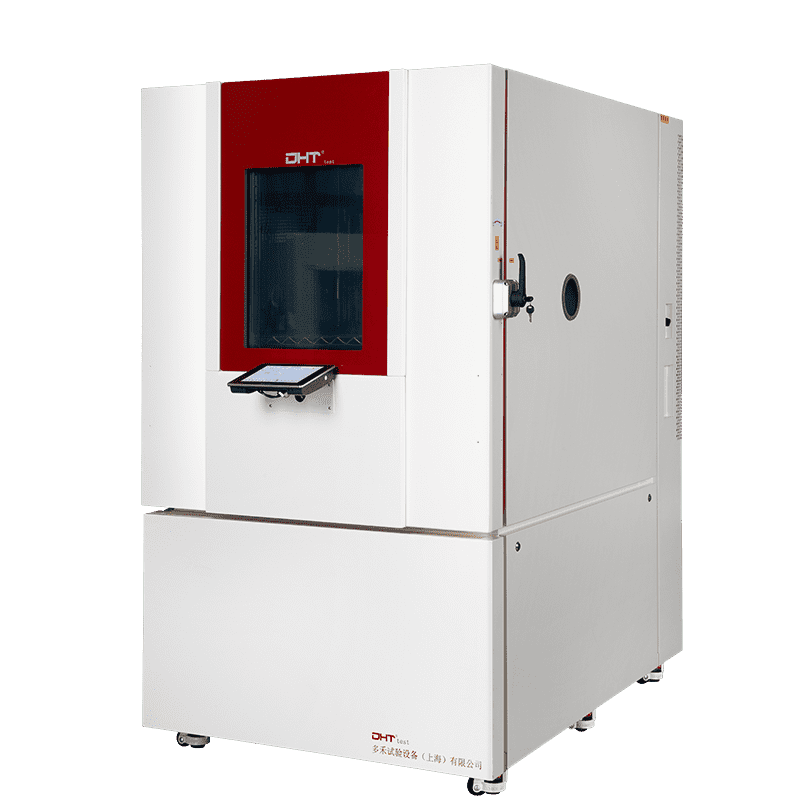Ingénieur principal, Test Doaho (DHT®)
Communs Essai au brouillard salin Normes et conditions d'essai
- ASTM B117: La norme la plus utilisée au monde en matière de brouillard salin neutre (NSS), applicable aux secteurs de l'automobile, de l'aérospatiale et de l'électronique.
-
ISO 9227: Norme internationale qui définit trois types de tests :
-
NSS (Brouillard salin neutre): Convient à la plupart des métaux et des revêtements organiques.
-
AASS (Acétique Acide Brouillard salin): Conçu pour les revêtements décoratifs.
-
CASS (Acétique accéléré par le cuivre) Acide Brouillard salin): Utilisé pour les matériaux très résistants à la corrosion.
-
-
GB/T 10125-2021: Norme nationale chinoise, techniquement équivalente à la norme ISO 9227.
Conception des tests et meilleures pratiques opérationnelles
-
Préparation de l'échantillon: Tous les échantillons doivent être soigneusement nettoyés avant l'essai afin d'éliminer l'huile, les empreintes digitales et autres contaminants. Les surfaces doivent être sèches et de taille homogène pour permettre les comparaisons. Un serrage soigneux est essentiel pour éviter de rayer ou d'endommager les revêtements ou les substrats, car ceux-ci peuvent devenir des points d'initiation de la corrosion.
-
Préparation de la solution saline et Maintenance: Une solution typique est composée de 5% NaCl en masse. De l'eau déionisée ou distillée doit être utilisée pour éviter l'introduction d'impuretés. Des contrôles réguliers doivent être effectués pour surveiller la concentration en sel et le pH (maintenu entre 6,5 et 7,2 pour les tests neutres). Des ajustements doivent être effectués rapidement si des écarts sont détectés. Les systèmes de filtration sont recommandés pour éviter le colmatage des buses et assurer une pulvérisation uniforme.
-
Exemple de placement: Les échantillons doivent être placés à un angle (généralement 15°-30°) à l'intérieur de la chambre à brouillard salin pour permettre au brouillard salin de s'écouler de la surface sans s'accumuler. Les échantillons doivent être suffisamment espacés pour éviter toute obstruction mutuelle. Utiliser des matériaux inertes tels que le plastique, l'acier inoxydable ou le verre pour le montage afin d'éviter la contamination par des supports corrodés.
-
Réglages et étalonnage de la chambre: Les capteurs de la chambre d'essai (température, humidité, systèmes de pulvérisation) doivent être régulièrement étalonnés pour garantir la précision. Pour les tests NSS, la température de la chambre est généralement fixée à 35 °C. Une température ambiante stable en laboratoire (environ 25 °C) améliore encore la répétabilité. Surveiller la densité du brouillard et le volume de collecte tout au long de l'essai afin de maintenir un environnement cohérent et d'éviter la formation excessive de gouttelettes.
-
Documentation et évaluation des essais: Les durées d'essai doivent être conformes aux normes spécifiées (par exemple, 24h, 48h, 96h, ou plusieurs centaines d'heures en fonction des besoins de l'utilisateur), et tous les paramètres d'essai doivent être enregistrés en détail. Après l'essai, les échantillons doivent être rincés et inspectés pour détecter les taches de corrosion, la propagation de la rouille et la performance du revêtement. Plusieurs essais peuvent être nécessaires pour garantir la fiabilité des données.
Pièges courants et stratégies de prévention
-
Mauvaise qualité de l'eau: L'utilisation de l'eau du robinet introduit des impuretés (par exemple, des ions de calcium et de magnésium) qui peuvent interférer avec les processus de corrosion. Utilisez toujours de l'eau déionisée.
-
Réactifs contaminés: Les solutions salines stockées depuis longtemps peuvent être contaminées par des impuretés en suspension dans l'air ou par une croissance microbienne. Remplacer ou filtrer régulièrement pour maintenir la pureté de la solution.
-
Étalonnage négligé: Des capteurs ou des systèmes de pulvérisation non calibrés peuvent entraîner des températures inexactes ou des volumes de pulvérisation inadéquats. Établir un plan d'étalonnage de routine conformément aux recommandations du fabricant.
-
Échantillons surchargés: Une charge excessive d'échantillons réduit l'uniformité de l'exposition et peut fausser les résultats. Respecter les directives relatives à la capacité de la chambre et effectuer des tests par lots si nécessaire.
-
Durées d'essai non standard: Modifier les durées d'essai pour gagner du temps ou réduire les coûts peut aboutir à des résultats non comparables. Respectez toujours le temps d'exposition spécifié et assurez la répétabilité en testant au moins deux échantillons du même type et de la même condition à des fins de comparaison.
Avantages de DHT Essai au brouillard salin Chambres
-
Contrôle précis de la température et de l'humidité: Fluctuation de la température à ±0,3°C et atomisation uniforme.
-
Construction résistante à la corrosion: Chambres intérieures en PRFV ou en polymères haute performance, adaptées aux essais de longue durée.
-
Intelligent Système d'exploitation: Contrôle PLC avec interface à écran tactile, permettant la programmation des tests, l'enregistrement des données et la surveillance à distance.
-
Personnalisation flexible: Disponibles dans une gamme de modèles, ils conviennent pour tester tous les éléments, des petites fixations aux grands panneaux de carrosserie.
Conclusion
FAQ
Quelles sont les principales normes pour les essais au brouillard salin dans l'industrie automobile ?
Les normes les plus courantes incluent l'ASTM B117, l'ISO 9227 (NSS, AASS, CASS) et le GB/T 10125-2021. Ces normes définissent les types de tests, les conditions de solution et les exigences de durée pour garantir des évaluations comparables de la résistance à la corrosion sur différents marchés.
Quelles sont les meilleures pratiques pour garantir des résultats fiables aux tests de brouillard salin ?
Les pratiques clés incluent un nettoyage approfondi des échantillons, une préparation adéquate de la solution saline avec de l'eau déionisée, une surveillance régulière du pH et de la concentration en sel, un placement correct des échantillons à des angles de 15° à 30°, un étalonnage de la chambre et une documentation détaillée des paramètres de test. Suivre ces pratiques prévient les écarts et garantit des résultats précis et reproductibles.
Quels sont les pièges courants des tests au brouillard salin et comment peuvent-ils être évités ?
Les problèmes typiques incluent l'utilisation d'eau du robinet au lieu de l'eau déionisée, des solutions salines contaminées ou vieillies, des capteurs non calibrés, le surchargement des échantillons, et la modification des durées de test. Ceux-ci peuvent fausser les résultats ou les rendre non comparables. Prévenir de telles erreurs nécessite une stricte adhérence aux normes, un étalonnage de routine et des procédures opérationnelles disciplinées.


